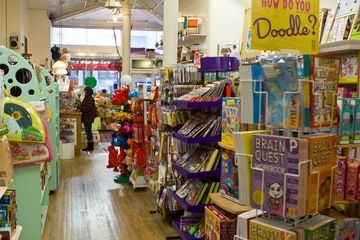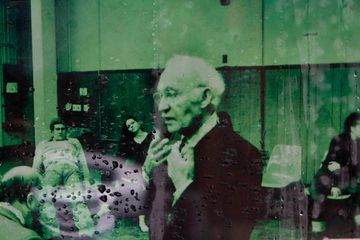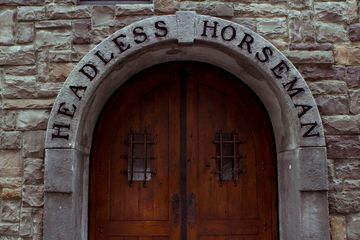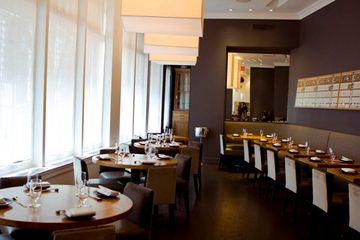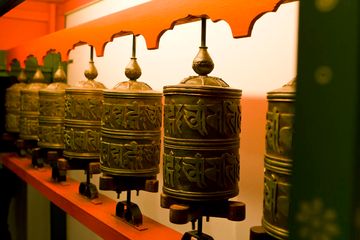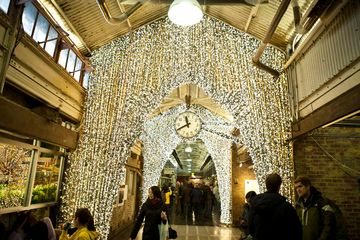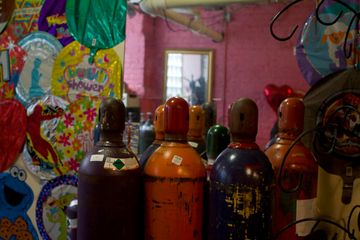Walking through the subterranean, industrial infrastructure of Chelsea Market, there is a bombardment of sight, sound, smell, and taste that is simply glorious. It is a sprawling, trendy, quirky, traditional, diverse, crowd-pleasing stroll rolled up in an epicurean’s paradise that always leaves me craving more. This underground bazaar winds through the belly of the old Nabisco factory with its concrete floors, iron-gilded arches, exposed beams, and bare bulbs conjuring up the past. The space was once the world’s largest baking factory, taking in 2, 500 barrels of flour a week and churning out Oreo, Marshmallow Sandwiches, and Nilla Wafers for distribution the world over. Today, at one bend, a wishing well with cascading water asks for spare change, and at the next, a canopy of Christmas lights welcomes visitors. One thing remains to link the new Market with the old National Biscuit Company’s bakery: the food. Distinct smells from savory to sweet linger around the curves and corners of the market, overtaking and enhancing the experience. The Lobster Place, which also sources fresh seafood to Cull & Pistol, offers an intensely salty and fishy aroma. The ginger, cardamom, and hibiscus are just a few prominent scents from Spices and Tease blends, which help distract the long line of people enticed by Los Tacos No. 1 during lunchtime rush. Next door, whiffs of ground coffee beans come from Ninth Street Espresso. Concentrated in one corner of the 15th Street arcade, The Doughnuttery, Bar Suzette (a crepe bar), and Li-Lac Chocolates never let a passerby forget to indulge after delighting in the vegan offerings at Beyond Sushi, an eatery that takes pride in fresh and local ingredients. On the specialty side, Dickson’s Farmstand is a butcher shop that works with small family farms and The Filling Station is committed to sourcing oils, vinegars, salts, and craft beers organically. A Manhattan staple, with an emphasis on organic and local, Amy’s Bread serves up delicious loaves from tangy sourdough to walnut raisin. The Green Table, a small haven for actual dining, also offers local, sustainable, and organic dishes including roasted pasture-raised chicken and a harvest salad. L’Arte Del Gelato‘s amaretto, panna cotta or mascarpone are only a few examples of the enticing flavors for the adventurous ice cream lover. People are constantly lining the narrow aisles to gather up the quality and well-priced fruits and vegetables from Manhattan Fruit Exchange or lingering in Buon Italia, with its bounty of imported Italian goods. Although gastronomy dominates, the Market is not entirely filled with food vendors. Anthropologie anchors one end of the market, and, wandering farther down, there is Posman Books, with an excellent selection of titles and greeting cards. Not only can chefs find absolutely anything necessary for their restaurants at Bowery Kitchen Supplies, but there is also an abundance of fun and useful items for the everyday cook. The colorful décor at Imports from Marrakesh constantly draws people inside. Artists & Fleas has found a permanent home just inside the Tenth Avenue entrance where Brooklyn’s emerging artists sell an ever-changing, well-curated collection of vintage goods. The farm-to-table sentiment is certainly not lost in the market with its vendors focused on high quality, ethically sourced ingredients – bringing rural roots to an urban environment. Chelsea Market is a retrofitted factory made into a concourse of culinary dreams, reminiscent of Grand Central Station and the vaulted, underground promenades of Paris. Read more about the shops of Chelsea Market.

